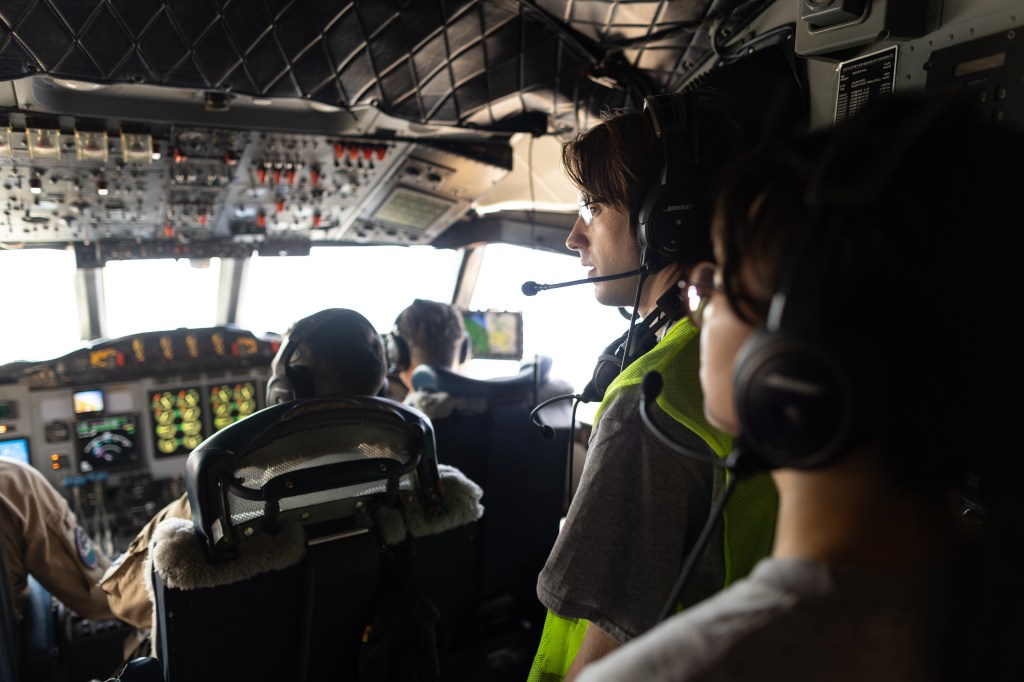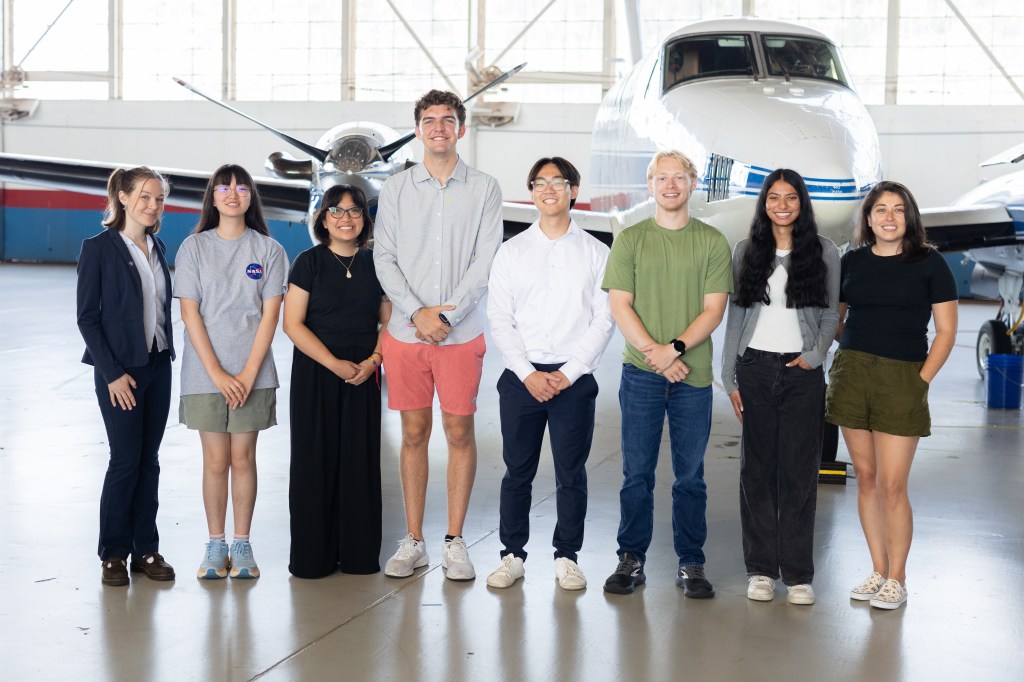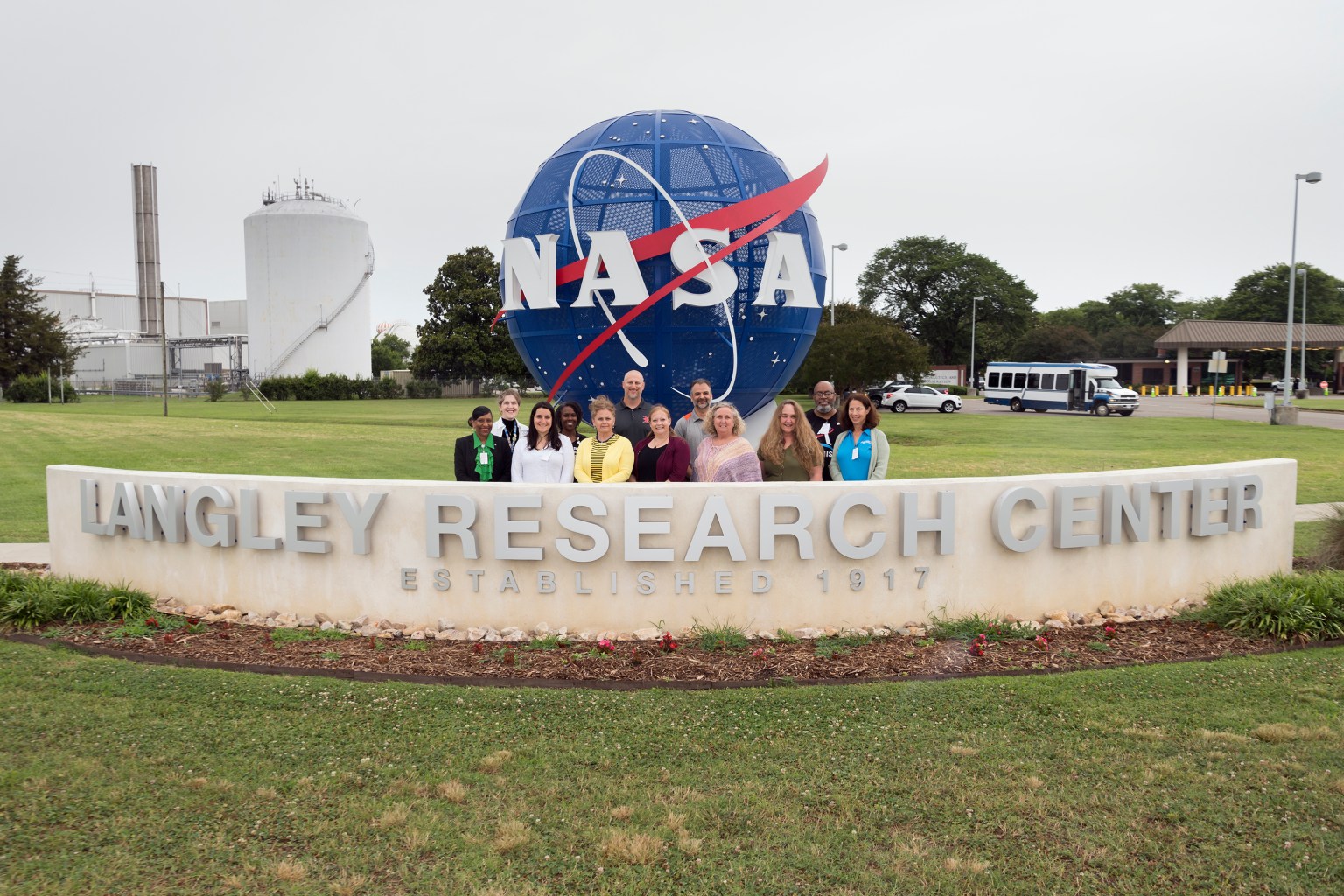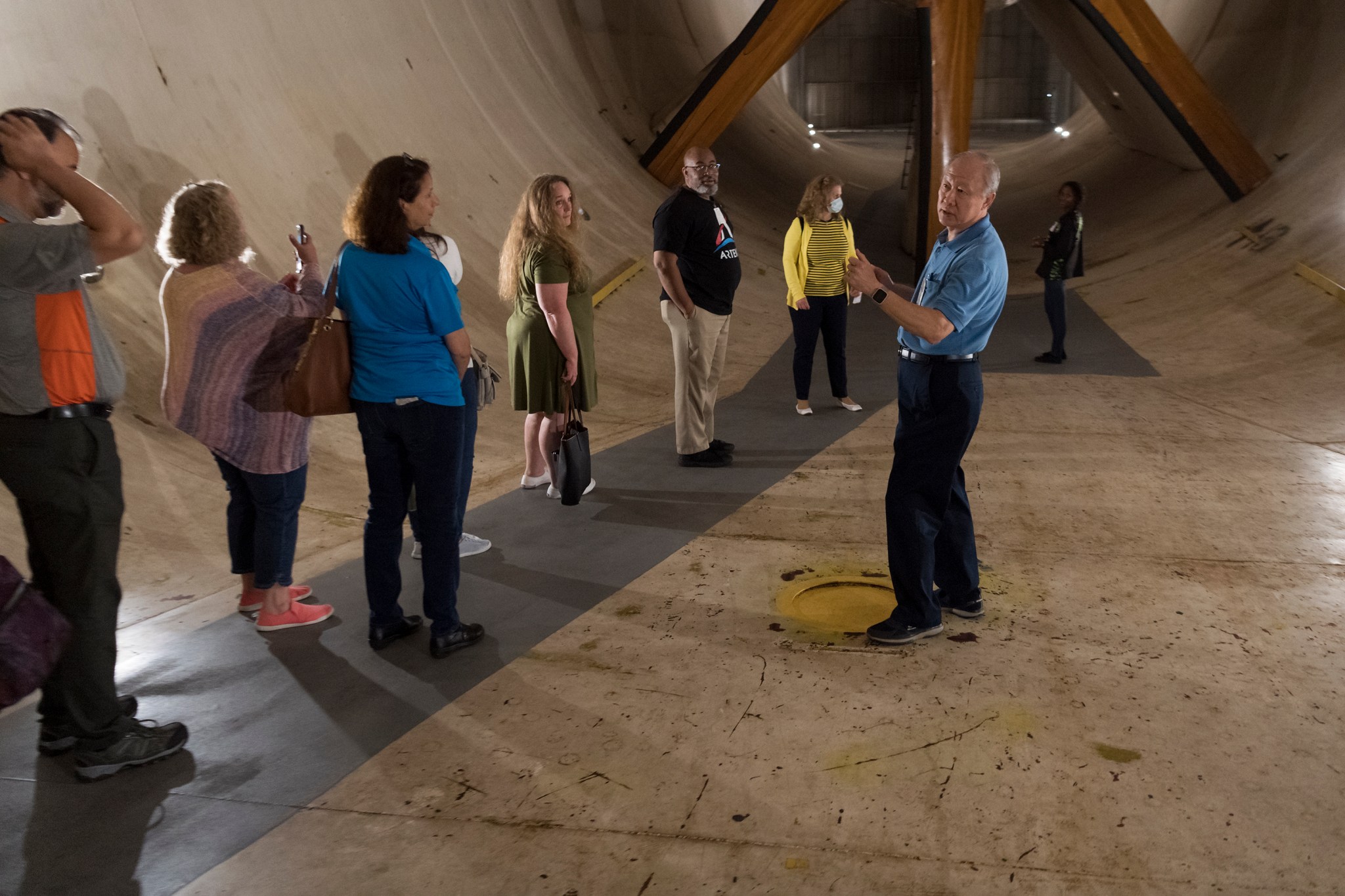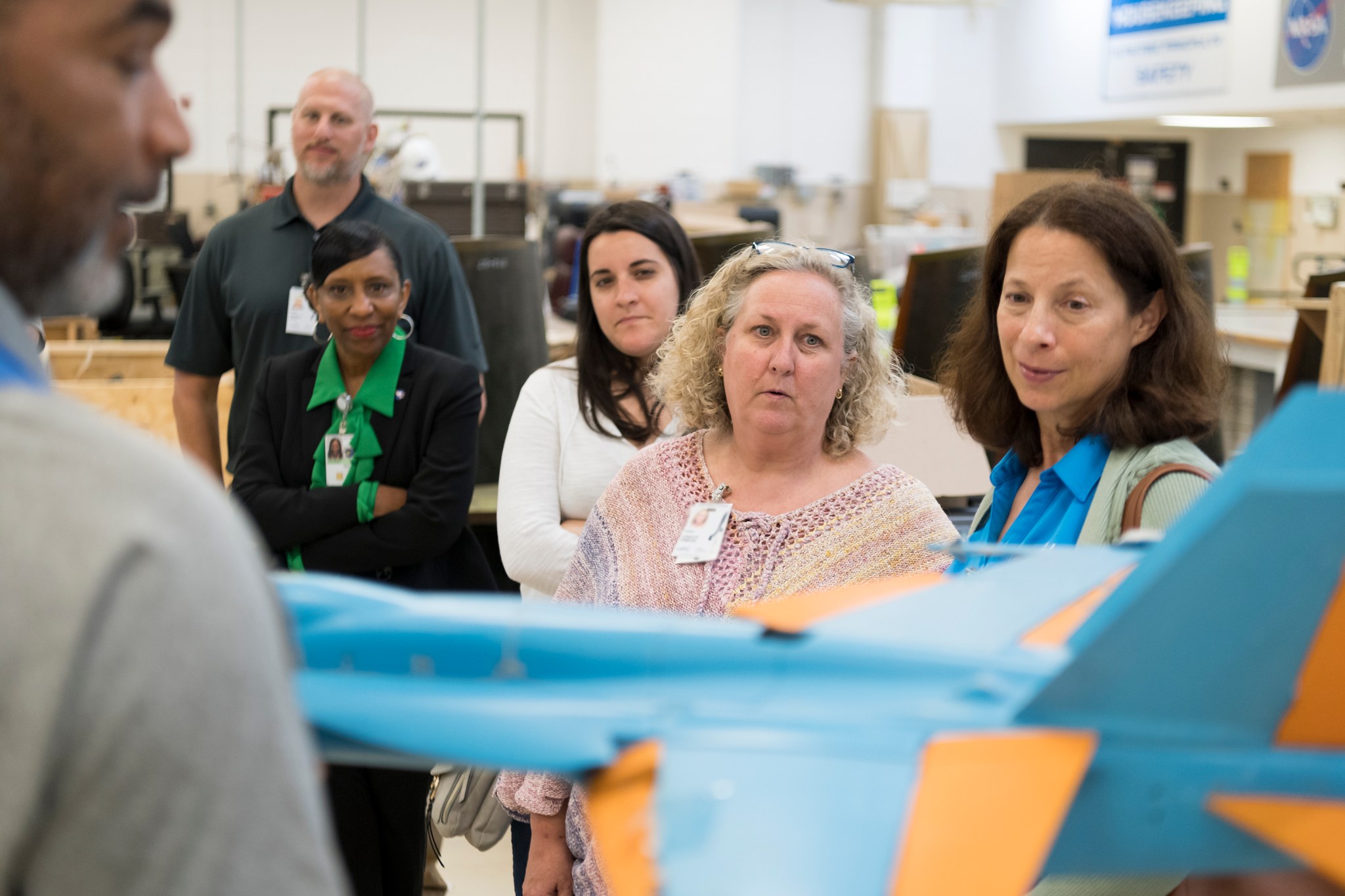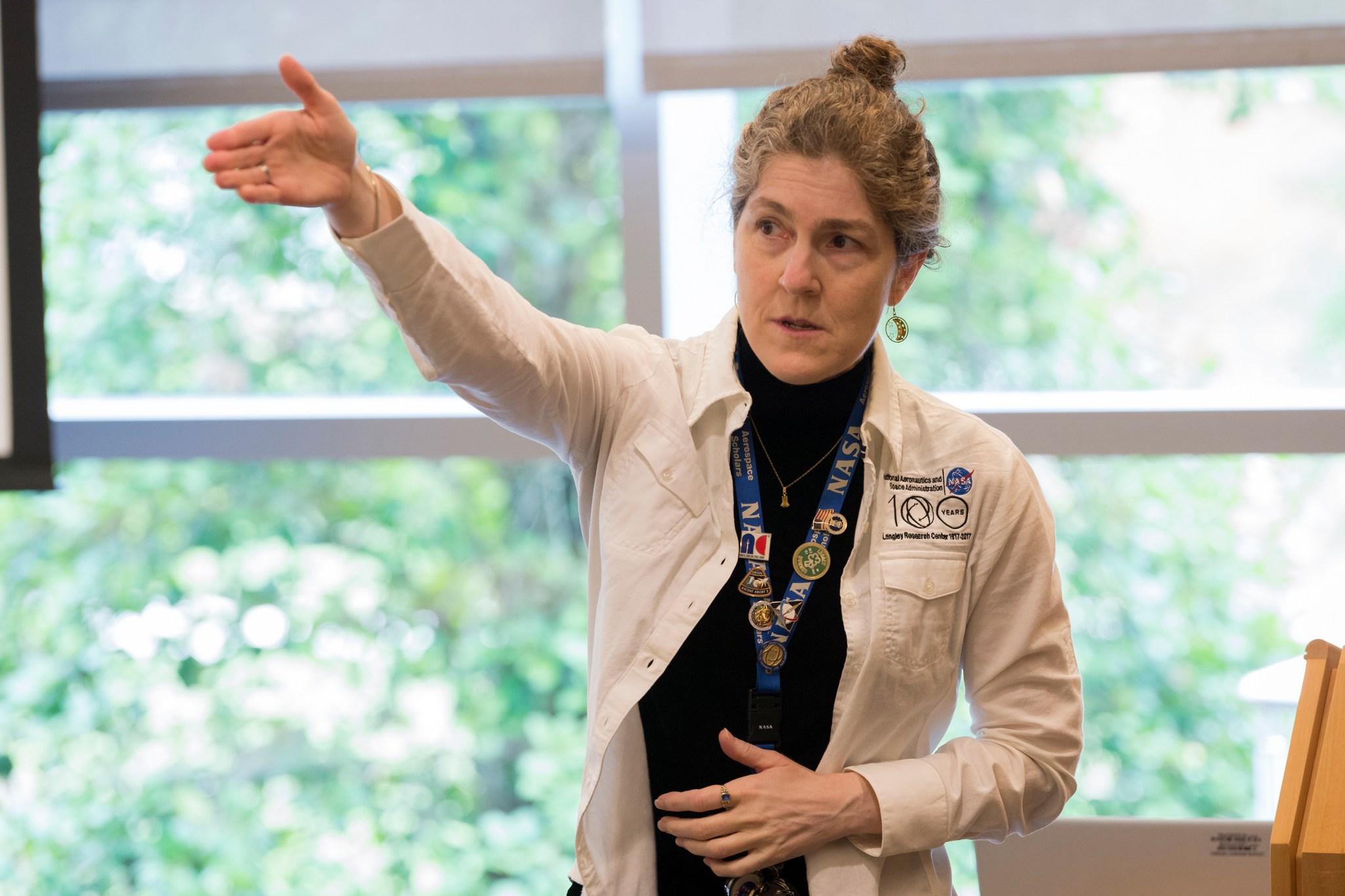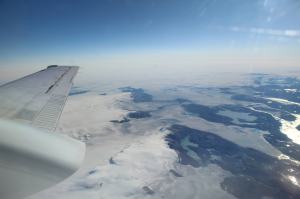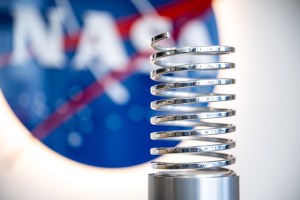It was a return three years in the making, as NASA’s Langley Research Center in Hampton, Virginia welcomed several educators to tour the facility as part of a statewide STEM program.
The goal of the Simulation-Based Math (MODSIM) Teacher Ambassador Program is to help build an educator workforce that is skilled in teaching innovative modeling and simulation-based engineering. This is done by increasing teacher understanding of its real-world applications and assisting in creating lesson plans integrating NASA missions and research into middle and high school mathematics.
The MODSIM Teacher Ambassadors Program is a partnership between Radford University’s Mathematics Education Program and Langley’s Office of STEM Engagement that goes back more than a decade. Dr. Darryl Corey, Radford University professor of mathematics education, is MODSIM’s principal investigator.
“Up until the COVID-19 pandemic, math educators would join us on center during the summer, usually for one or two weeks, in order to learn about how NASA uses modeling and simulation in its work,” said Dr. Anne Weiss, MODSIM lead at Langley. When the pandemic hit, the MODSIM program went all-virtual in its training. In keeping with the times, the event is now embracing a hybrid model with virtual and on-site elements.
Nearly a dozen middle- and high-school math educators from across Virginia spent June 23 at Langley – a culminating experience after a year of virtual online work in these areas using online sessions in Microsoft TEAMS, digital badges and other webinars.
Approximately 40 Virginia math teachers have participated in the yearlong MODSIM Teacher Ambassadors Program over the past two years. The group that joined the in-person session June 23 was a mix of teachers from the 2020-21 cohort and 2021-22 cohort, Weiss said.
“Although today was not a full MODSIM on-center experience in the traditional sense,” she said, “it is the first opportunity we’ve had to welcome these very patient educators on-site.”
One of those patient teachers was Randy Walston, who teaches math to high schoolers at Norfolk Public Schools. Walston has been a part of the MODISM program since 2019 and has rolled with the pandemic punches to enhance his teaching skills for his students.
“Math hasn’t left the building like Elvis,” Walston said. “(MODSIM) gives us real-world applications.”
In early 2020, the program began a transition to a train-the-trainer model in which educators would receive more in-depth preparation to serve as representatives of STEM in their communities. During the pandemic, the program transitioned to a fully virtual format.
“It was a challenge, but it was still fun,” Walston said of the virtual learning. “We made it through. It was great overall.”
Regardless of the format, teachers have been able to hear presentations from Langley subject matter experts, engage in hands-on instructional activities, and receive training on either GeoGebra or Desmos mathematical modeling software for the classroom.
By having NASA’s name and brand attached to the learning MODSIM program, teachers have some social proof that the math subjects they are teaching their students have weight and usable applications outside the classroom, Walston said.
“It makes it more exciting for them,” Walston said. “It gives them something to connect to the real world. It gives them an opportunity to learn or be interested in (STEM) and who knows where it could take them.”
The in-person session was an opportunity for the teachers to be informally introduced to some of Langley’s facilities such as the 14- by 22-Foot Subsonic Tunnel and the Model Shop before they begin volunteering for STEM outreach events as NASA Teacher Ambassadors later this year, Weiss said.
“The idea is to create teammates,” she said. “We’re going to learn together, we’re going to laugh together, but we’re also going to grow together.”
Those thoughts were echoed by Walston, who touted the program’s collaborative vibe with like-minded teachers to share ideas, stories and skills.
“We have to make math meaningful,” he said. “It helps us to relate it to science.”
Walston compared the MODISM program to a buffet of access, resources and knowledge through Langley’s Office of STEM Engagement.
“You don’t have to go create it – here it is,” he said.
















